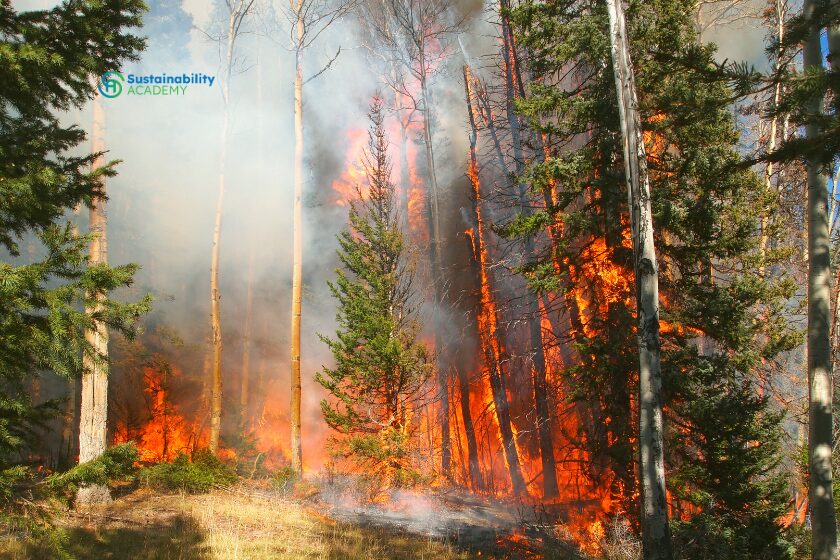California wildfires have become a recurring environmental catastrophe, leaving a trail of destruction that extends beyond the loss of homes and forests. The recent Los Angeles fires have once again highlighted the urgent need for sustainable solutions to mitigate their impact and build climate resilience. As lawmakers and environmental workers scramble to address the aftermath, it is essential to explore how wildfire affects the environment and what can be done to reduce carbon emissions and promote sustainability.
The Environmental Toll of California Wildfires
The Los Angeles wildfires of early 2025 have caused significant environmental damage, contributing to air and water pollution, ecosystem destruction, and long-term climate repercussions. According to EH&S Daily Advisor (2025), massive fires released large quantities of carbon dioxide, methane, and other greenhouse gases, exacerbating global warming. In addition, fine particulate matter (PM2.5) from wildfire smoke has led to severe air quality issues, increasing respiratory problems among residents.
Beyond air pollution, wildfires also contaminate water sources. As NPR (2025) reported, heavy rainfall following the fires has washed toxic debris into rivers and reservoirs, raising concerns over water safety. The destruction of vegetation further accelerates soil erosion, leading to long-term ecological imbalances. Environmental workers are now racing to clear hazardous waste left behind by the fires, as detailed in Reuters (2025), to prevent further contamination and restore affected areas.
The Economic and Social Consequences
Wildfire not only impacts the environment but also carry severe economic and social consequences. The Los Angeles Times (2025) reported that local lawmakers are pushing for federal action to address wildfire pollution and fund sustainable rebuilding efforts. Communities affected by the fires face displacement, loss of livelihoods, and the daunting challenge of reconstructing their homes and businesses. The cost of recovery is immense, and without proper intervention, the cycle of destruction will likely continue.
Solutions: Carbon Reduction and Climate Resilience
Given the devastating impact of wildfires, it is imperative to adopt proactive strategies to reduce carbon emissions and build climate resilience. Organizations the importance of sustainable urban planning, reforestation, and carbon reduction initiatives to mitigate the effects of wildfires. Investing in fire-resistant infrastructure and ecological restoration projects can significantly enhance the resilience of communities.
Individuals and businesses can also contribute to sustainability efforts by enrolling in specialized courses that equip them with the knowledge to combat climate change effectively. The Sustainability Academy offers online certifications such as the Certified Climate Resilient Officer course, which provides essential training on climate risk management and adaptation strategies. Additionally, the Carbon Reduction Strategy course teaches practical approaches to lowering carbon footprints and implementing sustainable policies.
Moving Forward: A Call to Action
The increasing frequency and intensity of California wildfire demand urgent action at both policy and individual levels. Governments must enforce stricter regulations on land use, deforestation, and emissions, while communities should prioritize wildfire preparedness and sustainable practices. As highlighted by the BBC (2025), rebuilding efforts must integrate green technologies and resilient infrastructure to prevent future disasters.
Education and awareness play a crucial role in fostering sustainability. By equipping professionals with the right tools through specialized courses, we can create a more climate-resilient future. The time to act is now—embracing sustainability is not just an option but a necessity to protect our environment and communities from the devastating effects of wildfires.
For more insights and practical training on climate resilience and carbon reduction, explore the courses offered by the Sustainability Academy and become part of the solution.

